|
It's that time of the year again – Teacher Appreciation Week is almost here! 🎉 As educators, it is important to take a moment to reflect on the incredible journey we're on and the profound impact we have on the lives of our students. Think about it: we're not just teachers; we're superheroes in disguise! Every day, we step into our classrooms ready to inspire, support, and empower our students. Whether it's teaching them the fundamentals of reading or advanced calculus (yes, even that! 😉), we're there, giving our all to make learning an adventure and help our students be successful. In a world that's constantly changing, we're the steady anchors guiding our students through the ups and downs of life. We're not just imparting knowledge; we're shaping the minds and hearts of future leaders, thinkers, and innovators. And that's no small feat! But here's the thing: sometimes, we forget to pat ourselves on the back. We're so focused on giving our students the best possible education that we forget to take a moment to appreciate ourselves. That's why Teacher Appreciation Week is so important. It's a reminder to us – yes, us! – that our hard work, dedication, and passion are truly appreciated. We also want to take a moment to celebrate the amazing educators surrounding us. Our teammates, colleagues, mentor teachers, administrators, also need to be shown how much they are appreciated, not only by the students, but by us! As teacher appreciation week quickly approaches, we have collected 6 different ways that you could show appreciation to the teachers in your life! Whether they are coworkers, teammates, a past teacher, or your child’s teacher, these ideas will resonate with every educator. 1. Just Tell Them!This is free, although sometimes not easy. One of the very best ways to show your appreciation to a teacher is to simply tell them. Your kind words and the time taken to speak with them will mean so much. 2. Handwritten Notes/Cards3. Unique Bouquets
|
| Purposeful planning leads to purposeful teaching. When you smack the two of them together you gain solid relationships, extreme academic growth, and confidence will flourish inside your classroom. The IntegratED model will help bring your classroom back to life. “That’s where the gold comes in. We get to pull in our favorite hands-on activities and books. We still use the curriculum that all the other teachers are required to use. We even use district-mandated resources… It just looks different!” |
In this profession, we can’t grow stagnant. We have to confront our norms, reflect on our teaching, and make goals to change our classrooms to empower our kids. THE KIDS COME FIRST! Question of the day: How would you learn best? Would you learn best from a teacher following a teacher's manual every single day? “Class, turn to page 28. We are on module 4, lesson 3 today”… ZZZZZZ! Or would you learn best from teachers who backward map, know their standards, and will do anything in their power to get you to learn them?
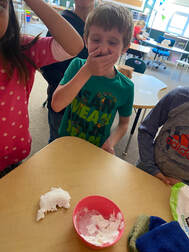
With the Integrated Framework, we’re able to creatively teach all standards for science/social studies, reading, writing, and math. We integrate them to make one smooth transition to the school day. First, find something you can INTEGRATE into your teaching that’s different from the others. Something that you’re passionate about. BE CREATIVE! You’ll also have to backwards map. Take a microscopic lens to your standards and look at your whole school year in advance for each core subject. Backwards mapping involves setting GOALS and lessons that align with the standards. We collaboratively work together in a magical way that allows us to integrate multiple subjects into a model that is much different than the normal classroom model. “You’re changing it up in the classroom. Your classroom door is open to the world, you’re doing your thing, kids are in the middle of it!”
The beauty of it is, that some of your reluctant students who don’t want to write are writing like future authors. The ones who didn’t want to sit down for math are now being mathematicians, the ones that always go to the bathroom during reading time are finding out that books are interesting and they can’t set their books down! All of a sudden, their bladders can wait just a little bit longer! “Your students are growing, you’re seeing light bulb moments go off all day. When it works, it works… Do it all with a PURPOSE!”
How can you start tomorrow? No more excuses, it’s all right here!
You can get your FREE IntegratED Planner and a copy of our framework that we use to plan OUR IntegratED Units.
You can get your FREE IntegratED Planner and a copy of our framework that we use to plan OUR IntegratED Units.
Be BRAVE. Take RISKS. Be CREATIVE!
Your PURPOSE will help students find theirs!
Your PURPOSE will help students find theirs!
Check out our Vodcast on this topic on our YouTube Channel @toteachornottoteach.
William Shakespeare once said, “to be, or not to be, that is the question. ”Talking with boredom about his life and his purpose. IntegratED says, “to script, or not to script, that is OUR question.” Just let that question soak in a bit… Do you follow the script to the “T”? Are you tired of the same old curriculum and the same outcome year in and year out? Well climb aboard, it’s time to take chances, make mistakes, and get IntegratED!
Curriculum– What is it? When we think of curriculum we think of guided learning. When we think of guided learning we think of forming attainable goals with students, finding engaging resources and content to support students, and taking the appropriate steps to make learning engaging and fun. A curriculum can be powerful! Success in a curriculum comes from knowledge, skills, and a passionate attitude driven by the teacher.
Sometimes when we hear “curriculum” we get a sour taste in our mouths. We immediately think of basal readers and other resources that take all creativity out of the art of teaching. “Day 1, complete page 145. Day 2, complete page… Blah, blah, blah! Do you see what we’re getting at? We as teachers should have a curriculum to follow and standards/goals for students to fully achieve. However, as teachers, we have to pull in other resources and differentiate to fully reach ALL of our students' needs.
This brings us to my next point– Fidelity… Is it bad? In education, the word fidelity gets thrown around a lot. Fidelity in our eyes takes away creativity in the classroom. It abolishes critical thinking skills and oftentimes creates lackluster teachers that have completely lost their passion for teaching. Following the script with fidelity might be an easy way out, however, teaching with fidelity is NOT what is best for kids!
Don’t let the curriculum box you in! What does this mean? Bluntly, this means, don’t be a rule follower if you know what is best for kids. As a teacher, this is your craft! Follow your heart, and drop the script, because your students deserve more! Our instruction should drive growth and student effectiveness, NOT a curriculum.
"Your curriculum is only as good as the person using it"
I know you’re probably thinking, “How do we still use our district-mandated curriculum and reach all our children?” Easy peasy, lemon squeezy, it's called “content-driven instruction!” Creating purposeful lessons collaboratively that reach all of our students as a whole. You must first form a strong relationship with each student in your class. You have to differentiate and bring topics in from the real world to make your students passionate about what they’re learning. Lastly, you need to be able to REFLECT on your teaching. Reflection is a hard thing to do. It sometimes humbles us, but if the kids truly come first in your heart, there is always something you can change, or modify to inspire every student in your classroom.
We’re not telling you the curriculum is bad. We’re not saying to put all the curriculum away. All we’re saying is that you need to modify, change, and inspire! It's time to take ownership of your classroom before your curriculum becomes the owner of you.
Curriculum– What is it? When we think of curriculum we think of guided learning. When we think of guided learning we think of forming attainable goals with students, finding engaging resources and content to support students, and taking the appropriate steps to make learning engaging and fun. A curriculum can be powerful! Success in a curriculum comes from knowledge, skills, and a passionate attitude driven by the teacher.
Sometimes when we hear “curriculum” we get a sour taste in our mouths. We immediately think of basal readers and other resources that take all creativity out of the art of teaching. “Day 1, complete page 145. Day 2, complete page… Blah, blah, blah! Do you see what we’re getting at? We as teachers should have a curriculum to follow and standards/goals for students to fully achieve. However, as teachers, we have to pull in other resources and differentiate to fully reach ALL of our students' needs.
This brings us to my next point– Fidelity… Is it bad? In education, the word fidelity gets thrown around a lot. Fidelity in our eyes takes away creativity in the classroom. It abolishes critical thinking skills and oftentimes creates lackluster teachers that have completely lost their passion for teaching. Following the script with fidelity might be an easy way out, however, teaching with fidelity is NOT what is best for kids!
Don’t let the curriculum box you in! What does this mean? Bluntly, this means, don’t be a rule follower if you know what is best for kids. As a teacher, this is your craft! Follow your heart, and drop the script, because your students deserve more! Our instruction should drive growth and student effectiveness, NOT a curriculum.
"Your curriculum is only as good as the person using it"
I know you’re probably thinking, “How do we still use our district-mandated curriculum and reach all our children?” Easy peasy, lemon squeezy, it's called “content-driven instruction!” Creating purposeful lessons collaboratively that reach all of our students as a whole. You must first form a strong relationship with each student in your class. You have to differentiate and bring topics in from the real world to make your students passionate about what they’re learning. Lastly, you need to be able to REFLECT on your teaching. Reflection is a hard thing to do. It sometimes humbles us, but if the kids truly come first in your heart, there is always something you can change, or modify to inspire every student in your classroom.
We’re not telling you the curriculum is bad. We’re not saying to put all the curriculum away. All we’re saying is that you need to modify, change, and inspire! It's time to take ownership of your classroom before your curriculum becomes the owner of you.
Check out our vodcast "To Script or Not To Script" for more on this topic.
In the ever-evolving landscape of education, fostering student engagement is a top priority for educators. To meet the needs of today's learners, educators are constantly seeking innovative instructional strategies that not only capture students' attention but also inspire deep, lasting understanding.
In this article, we will explore five instructional strategies that have emerged as powerful tools in the pursuit of enhanced student engagement. Join us as we share 5 different innovative teaching methods, each designed to ignite curiosity, stimulate critical thinking, and ultimately, empower students to become active participants in their own learning. Whether you're an experienced educator or a curious learner, these strategies hold the promise of transforming education into an engaging, dynamic, and unforgettable adventure.
1. Content Driven Instruction:
| Lead your units/lessons with science, social studies, or history content to drive instruction while pairing reading and writing standards to the content. By doing this you are providing students with the knowledge, vocabulary, and experiences to become proficient learners. Knowledge is power! Let the content engage your students. |
2. Purposeful Learning Experiences:
| These are hands-on investigations/experiences that drive and enhance the content you are delivering to your students. You want to create learning experiences that are purposeful to the content you are teaching. We are not talking about Pinterest room transformations but simple ways to incorporate experiences that students will remember and give them something to ‘stick’ their knowledge to about the content. |
3. Beyond the Box Hooks:
Grab your students' interest and get them excited about the lesson with a hook! These could be:
- Short Video clips: like a venus fly trap, or an octopus escaping a jar
- Unboxing videos/activities: give them clues of what you will be learning
- Unusual photograph
- Investigation: what a better way for students to get to know what they are learning about than by getting to do a hands-on investigation right off the bat!
- Short Video clips: like a venus fly trap, or an octopus escaping a jar
- Unboxing videos/activities: give them clues of what you will be learning
- Unusual photograph
- Investigation: what a better way for students to get to know what they are learning about than by getting to do a hands-on investigation right off the bat!
4. Multiple Learning Pathway Strategies:
You might not think this is out of the box but it needs to be brought back to the classroom. Provide students with the ability to learn with art, music, and movement that is incorporated into your units or lessons. Think about how you learn best as an adult and start there.
5. Engaging Read Alouds:
You might not be the teacher that is loud and animated everytime you read out loud to your students but think about how you could enhance the life of the story you are ready but adding voice or movement as you read. Your students will love it and the teacher across the hall might get the motivation to try it for themselves. If you want to take it a step further, there is even an app, Novel Effect, that will add sound effects for you as you read! Bring the books to life for your students!
The quest to improve student engagement is an ongoing endeavor. The five innovative instructional strategies we've explored in this article represent just a glimpse into the ever-expanding toolkit available to teachers.
Let's remember that student engagement is not a destination but a continuous exploration. Together, we can cultivate a learning environment where curiosity thrives, critical thinking flourishes, and students emerge as active, enthusiastic participants in their own education. By harnessing the power of innovation, we can pave the way for a brighter and more engaging future for all learners.
Let's remember that student engagement is not a destination but a continuous exploration. Together, we can cultivate a learning environment where curiosity thrives, critical thinking flourishes, and students emerge as active, enthusiastic participants in their own education. By harnessing the power of innovation, we can pave the way for a brighter and more engaging future for all learners.
We hope you got some value out of our blog today! Be sure to follow us on our social media platforms; Facebook, Instagram, Twitter, @IntegratEDk12!
For more individualized and in depth learning on more innovative instructional strategies, planning content driven lessons/units, as well as classroom learning experiences, be sure to check out our PD opportunities! Keynotes, workshops, cohorts, coaching, all available and tailored to meet the needs of your team!
For more individualized and in depth learning on more innovative instructional strategies, planning content driven lessons/units, as well as classroom learning experiences, be sure to check out our PD opportunities! Keynotes, workshops, cohorts, coaching, all available and tailored to meet the needs of your team!
Climate and culture are two words as educators we hear a lot. They seem to be two words that are consistently talked about, trained on, and continually being honed and developed in schools. As they should be! Without a strong, positive climate and culture within one’s building or classroom, it doesn’t matter how much new “stuff” you have or how pretty your bulletin boards look, the students won’t feel valued, heard, or seen. And if they are feeling those negative emotions, the pathway to learning just got a whole lot harder. As educators, not only do we want our physical space to look welcoming, but we also need our space to feel welcoming. Students should feel that the classroom is not just the teacher’s space, but theirs as well. A space where their voices matter, they are safe, they are supported, and they are loved.
How do you create such a space? It is by taking the time at the beginning of the year and continually throughout the year, in implementing different activities/lessons that showcase those that make up the community in the classroom. Megan and I do not jump into content right away at the beginning of the school year. We take that precious time to work on building up the climate and culture within our classrooms. We believe wholeheartedly that taking the time at the beginning is so well worth it and will come back to you tenfold in the success you see, not only socially and emotionally but academically as well.
If you were to google climate and culture in the classroom, there are many different ideas from so many amazing educators out there. At times it can seem overwhelming! What we have done is compiled a few different classroom activities/lessons that you could implement to help you get started! These activities/lessons could be implemented at the beginning or the school year, or even throughout the school year to help strengthen the climate and culture in your classroom.
Building Climate & Culture in the Classroom Ideas
1. Me Bags: This is an oldie but a goodie. For this activity, each student is given a paper bag to take home with them. Students then fill the bag with 5 (or however many you choose) items to put in the bag. When they return the bag to school, the student shares what items they have chosen and why. This allows students to get to know one another and allows students to start some great conversations!
2. Morning Message/Joke of the Day: We are huge fans of morning messages! It is such a great way to start the day. With our morning message, we always add on a joke of the day. This has become such a hit in the classroom! Students look forward to the jokes and it's fun to hear them repeating them to other teachers in the building! It has become so popular that we have had to start a Joke Box, where students can submit jokes that they know, hear, or read. It is always fun to watch their expressions when they realize it is one of their jokes on the board!
| 3. Morning Journals: Every morning when students arrive, they get to write in their morning journals. There is a prompt up on the board. Sometimes the prompts are silly and have students using their imagination. Some prompts are students giving their opinion on something. Some prompts are students recalling past experiences or what they want in the future. Whatever the prompt, we have found that these journals are a wonderful gateway in getting to know our students on a deeper, more meaningful level. Students love reading our comments and feedback and it shows them that they are being heard and what they say matters. |
| 4. Class Promise: On the first day of school the one thing that we do with our classes is create a class promise. We have found that students can relate and attach to a promise more so than a list of rules. Before we create our class promise we talk about things that create a good learning environment or good friends. We discuss what the students want to see and feel in our classroom throughout the school year. From that discussion we agree on 3 - 5 promises that we write down to create our collective Class Promise. After writing our Class Promise, students each sign their name and then we hang it up somewhere in the classroom that will be visible all year long. |
| 5. Top Three: This is very similar to the idea of a Class Promise. Instead of writing out a sentence or phrase, the class agrees upon 3 words that they will strive for throughout the year. Just as they did in the class promise, students sign the paper and it is hung somewhere in the classroom where it is visible throughout the year. Some examples of words that past classes have chosen are teamwork, perseverance, kindness, determination. To come up with the words, we simply brainstorm a word web of what makes a good classmate/student. Great discussions come out of this. Then you can help guide students to a consensus of what the TOP 3 for the class should be for the year. |
6. All About Me Collages (Digital): This is a very simple and quick activity you can incorporate in any grade level or class. Students will create a collage of their favorite things or images that will tell about themselves on a digital platform. We like to use the app PicCollage. We love this app and it’s free! As the teacher, you can dictate how many images or items they need on their collage if you feel that your group of students needs that direction. When they are done, you can post them on a digital platform for students to see and comment on. You could also print them, have students speak on what they put in the collages, and then hang the collages in the classroom, in student lockers, or even on a bulletin board. This is one you can make as simple or as extravagant as you would like.
7. Snowball Fight: Who doesn’t like a little bit of Christmas in July?! This one gets students moving, you can involve music, and is simply FUN! Before the snowball fight can begin, you have to make the snowballs. We use cut up strips of paper. It is the teacher's choice of how many strips you want/need. Each student needs to write a fact about themselves on the strip of paper. We encourage more personal things, things that would help distinguish them from the crowd, not just what their favorite color is. After facts are written, students crumple them up. You then divide students up and have them start throwing snowballs! Now, this is where music can come into play. They have to stop when the music does, etc. You can make this as creative or extend this as much as you’d like! By the end students need however many snowballs they began with. Students then take turns reading the fact and guessing which student wrote that fact!
8. Paper Chain Challenge: This challenge encourages soft skills that students need continued practice with, collaboration and communication. Here students are put into groups. The goal is for each group to make the longest paper chain they can using only one piece of construction paper, scissors, and glue. They get 30 minutes to work. They do not get new paper throughout the process so encouraging collaboration and planning is important. At the end of the 30 minutes, have groups lay out their paper chains to see which group has the longest chain! After the chains are done, you can hang them up around the classroom as a reminder of the importance of teamwork, collaboration, and communication.
Now, again, we know there are SO many more ideas that can be implemented in the classroom to help build up the climate and culture. Because there are so many, it at times can feel overwhelming. We simply wanted to provide some ideas and resources from what we have seen success with in our classrooms.
If you have any that you would like to share with us, please do! We’d love to give you a shout out and provide educators with more awesome ideas!
If you have any that you would like to share with us, please do! We’d love to give you a shout out and provide educators with more awesome ideas!
For more individualized and in depth learning on planning content driven lessons/units as well as classroom learning experiences, be sure to check out our IntegratED cohort. LIMITED spots are available!
We hope you got some value out of our blog! Be sure to follow us on our social media platforms; Facebook, Instagram, Twitter, @IntegratEDk12 for more classroom ideas and happenings.
I am a mom of four. All of my children will be in school this year…how is that possible!? I will have one in junior high, two in grade school, and one in preschool. One of my favorite parts of having my own children in school is to hear how they are doing in their own classrooms, how they are with their peers, and who they are as a learner from their teachers.
Parent communication is very important to me (Meg) not only as a parent but as a teacher. When you stay connected with parents/guardians you build a relationship between home and school. This allows you, as their teacher, to learn about their home life to help better meet their needs in the classroom. It also opens the doors for you as the teacher to work together with the parents/guardians to give the best learning experience for their student.
There are many different ways you can communicate with parents/guardians in your classroom. Whatever you choose, it should be what you feel most comfortable with. My rule of thumb for communication is to make sure I am sending home positive notes or messages about each student frequently, especially your challenging students. Trust me, the parents/guardians know their student is difficult and when you make a phone call home or send a message they are expecting it to be bad. Turn that narrative around and surprise them and share a positive. The impact on the relationship between parents, teachers, and students is powerful.
Ideas for Family Communication
Monthly Newsletter: Create a template that you can easily change out each month to give families updates on what is happening in your classroom. You could include what you are learning about, upcoming activities, school happenings, important dates, etc… Keep it simple and add some pictures.
Unit Family Letter: If you have started to create IntegratED Units with us or have tried them on your own, create a newsletter letting parents know what is coming up in their learning. This puts families in the know for a great start to a discussion at the dinner table. Bonus: If parents/guardians have an idea about the topic it gives them a pathway to tell their student what they know.

Instant Messaging (Class DoJo, Remind, etc.): I am constantly seeing notes home on the floor after the bell has rang and students have left. You know the one saying we are going on a field trip and to make sure to pack a lunch. Using an app that supports instant messaging allows us and families to make a quick reminder or message home, taking away the stress of wondering if your student got that very important paper home safe. You can also send out pictures and reminders on a “Class Story” so families can see what is happening in the classroom.
| Pro Tip: Create a schedule and send a message to each parent/guardian at least once a month. These messages are positive notes on how they are doing in class, who they are playing with, favorite things they did, or funny stories. Families love to hear that their student is doing well. |
Volunteers: At the beginning of each quarter send out a volunteer letter. This might be something that is going on in your building or in your classroom. I have met so many family members that would love to dedicate some of their time during the week helping me or my students. Some ideas to put on your list are: listening to students read, playing a game, cutting out lamination, helping with PTO activities, etc…
| Social Media Group (Facebook): Each year Kara and I create a private Facebook group. In this group we share classroom happenings. Our goal is to post every day. Before posting any of our students we send home a Facebook permission form. If you would like to see what that looks like feel free to reach out and we can send you a copy. |
Real teacher talk coming at you, because I know so many of you will understand. As I sit down to write this blog, my mind is going a million miles a minute thinking about school and all the things that I need to start doing. Anyone else have that happening to them? It’s like on August 1, a switch gets turned on in my brain and I go into school mode. I want to enjoy the rest of my summer, what little is left, but school starts to take over my thoughts.
The beginning of the school year comes with so many mixed feelings. The top two… excitement and stress. If you’re like me, you get excited to set up your classroom, meet your new students, catch up with colleagues, and have that sense of refreshness and new beginnings. But there is a flip side to that as well. You start to feel a bit stressed as the to-do lists get longer, the time in your classroom to work gets shorter, and the laminator breaks! 😉 Add to that a new grade level, new team members, or a new school and you have a stressed out teacher before students ever enter the classroom!
We all want to start the new year with our best foot forward. So we put together a few ideas that help us minimize the stress and keep the excitement level up! We hope this might help you as well!
| Planning Resources: A huge stress point at the beginning of the year is not only getting your classroom set up but planning! One thing that helps us is using the IntegratED Framework and planner to help keep us on track. If you are needing more information on the IntegratED Framework, go check out our past blogs here. Also, we have a FREE sample planner on our website! Click here to get your copy. |
Setting Boundaries: This is one thing that I (Kara) had to learn the hard way when I first began teaching. I did not set boundaries at all when I first began my career and almost quite within the first 6 months of teaching. You need to set up boundaries for you and your family. School does not need to become your end all be all. Is it important, yes but it cannot take over everything. Set a time that you are going to leave everyday and stick to it. It will help you utilize any planning time more effectively and prioritize what needs to be done. Don’t bring it home! Don’t bring home a crate full of things to work on every night. I know there are certain times when it does happen, but don’t make that your habit and your norm!
Gratitude: Look for at least 5 things that you were grateful for during the day. During this time of the year because of the stress we experience, we can become quite hyper focused on the negative. Take a moment to breathe and think back on the day. What are 5 things that you were grateful for? It could be something as simple as a coworker complimenting your outfit. When we focus on the good, the good only gets better! And then the negative doesn’t take as strong of hold in our lives. When we can be grateful, we can have joy!
| Plan of Action: When I have work time in my classroom, I always like to have a plan of action to minimize those moments of standing and staring at the piles accumulating in my classroom (which still happens… lets be honest 😉). I try to prioritize what needs to get done as best I can and it always feels so good to get something crossed off the list! |
Flexibility: No matter how good of a plan you have laid out, we know as educators there will always be something thrown at us that we didn’t expect! Flexibility is an attribute that good educators possess and the beginning of the year is when we have to bend and flex the most.
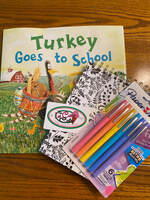
Team Building: This year we have a brand new team. I am so incredibly excited for it, but it can be nerve wracking thinking about how to make it all work with new team members. See… stressed but excited! 😉 Even if you have a veteran team, it is always good to start the year off on the right foot. Think of different things that will encourage one another and support one another. If you don’t have a team, those in your building. Small beginning of the year gifts, coffee runs, quarterly breakfasts, their favorite candy or drink stashed in your desk that you could give them if they are having a bad day, collaborative planning times, and shared resources are just a few small gestures that could go a long way in building up your team.
FUN: Plan for some FUN! The beginning of the year is the perfect time for those fun icebreakers and games (also great community building activities). Oftentimes we can bombard students with the drill and kill of routines and procedures. It can make for long days, off task students, and tired teachers. Yes, of course routines and procedures need to be taught, but there are so many creative ways that it can be done. Task cards, class contests, board games, mentor texts are just some ways you could teach routines and procedures while adding in some fun! If you are excited for an activity, it is contagious and the students will be too!
Grace: Give yourself grace as easily as you give it to others. There is a lot to be done in a short amount of time. And if you’re anything like me, a bit of a perfectionist and can get down on myself when things are not all crossed off the list or something didn’t turn out the way I wanted it to. We just need to remember that students are not needing perfection, they are just needing YOU!
As the school year gets underway, here at IntegratED we are wishing you the very best school year!
Also, if you are starting the school year and feeling a bit overwhelmed with knowing what and how to plan, there are still two spots available in our cohort! Check out our website for more information!
Also, if you are starting the school year and feeling a bit overwhelmed with knowing what and how to plan, there are still two spots available in our cohort! Check out our website for more information!
Starting an IntegratED Year
It is hard to believe but July 4th has already passed! As an educator that means we are starting to think and plan for the upcoming school year. In this article we have included our favorite teacher must have, classroom setup ideas, and planning favorites. No matter if you are moving grade levels/schools or if you are a veteran teacher, there is something here for you!
Our Favorite Teacher Must Haves
As much as I am opposed to Target starting their school supply section in June, I LOVE walking down the school supply isles. There is something about buying new markers, pens, and notepads that brings me joy. We have listed a few of our favorites throughout the years.
| |
|
Classroom Set-up Ideas
When it comes to setting up your classroom the most important thing to remember is to make it your own! You do not have to spend a lot of money or have everything matching to have a fantastic classroom that feels welcoming and safe. Here are some things that might help give you some ideas as you start to think about your home away from home.
| Classroom Library: Make sure that you have a library that is accessible for your students. My favorite way to organize my books is by categories and chapter books by series. I use baskets and book boxes. I always display books that go with the integrated unit we are in so students have access to all the information right at their fingertips. My Amazon cart wish list is always filled with new read aloud books. Remember, even the older kids love to listen to you read, don’t leave them out! <--Photo credit: Jillian Starr library |
| Rug or Dot Spots: I have used both a class rug and dot spots for students to come join me for a lesson. This year I found an amazing rug at rugs.com for a decent price. We also love to put rugs around the classroom for students to read and work on. These ones from Amazon are so soft and come in a ton of different colors. |
| Soft Start Cart: I (Meg) got a small three level cart on wheels and put different activities for students to do when they arrive in the morning. This allows students to soft start their day by getting their brains warm, chatting with friends, and being able to use their creativity. Some examples of items you could put on your cart could be coloring books, hot to draw books, play-doh, puzzles, card games, magnetic building blocks, etc.. I found for this to work best is to rotate items as needed, talk about your expectations for each item and expectations on how you want your students to be while they are getting ready for the day. |
Art Supplies: It’s time to stock up on some art supplies. Yes, even intermediate teachers! We always have paint brushes, tempera paint, and watercolors paint on hand. We have found so many ways to integrate that into our classroom learning experiences and each time the kids LOVE IT!
Flexible Seating: When flexible seating was hip and new I tried to go all out and make my classroom filled with seating options except the traditional desks and chairs. I found in my primary classroom that it was a mistake. Flexible seating can look many different ways but we have found some students would still like the option of a traditional desk and chair. Now, our classrooms have options like pillows to use around the room, wobble stools, rocking chairs, standing desks, and bouncing balls and a table with regular chairs. Just remember you do not have to break the bank to have a flexible seating classroom.
Pro Tip: Buy outdoor pillows for your classroom for easier washing. They even might be on clearance at the end of summer right before school starts!
Pro Tip: Buy outdoor pillows for your classroom for easier washing. They even might be on clearance at the end of summer right before school starts!
All Our Favorite Planning Things
There are so many resources for us to use. That can be very overwhelming for us as educators to find and use the ones we think will work best. We have compiled a list of our favorite planning things that might help you get started. Remember when you plan an integrated unit you are taking away the challenge of fitting it all in. We bring the joy back into our teaching and students' learning!
| Google Calendar for Planning: A few years ago we made the switch from a written planner (my favorite was Erin Condren…so expensive) to a digital planner. We are currently using google calendar for our team planning. We set up each part of the day as a calendar and then share that with our team. This allows you to edit the note and type out your plans, add links, PDFs, videos, etc.. We also can use this to set reminders of upcoming dates like field trips, assemblies, parent communication, and so much more. We love this because we can have all of our plans, links, and documents in one place. | Pro tip: Copy and paste your plans into sub plans for easy planning on those days where you need to be gone unexpectedly. |
IntegratED Unit Planner: We use our planner when we sit down and plan a unit together. This helps us think about what standards to put together, classroom experiences to incorporate, timeline, and materials. To learn more about how to plan a unit join our IntegratED cohort where we walk you through how to plan an IntegratED Unit.
| PD Planning Books: These are a list of books that we have used parts and pieces of to plan the strongest integrated units. Just remember the resource is only as good as the teacher using it. Find what works best for you and what fits. These books are not meant to start on page one and teach until the end. |
|
We hope this article provided you with some ideas and excitement to start the new year. As ALWAYS we are here for our educators. Please reach out to us [email protected] or on any social media.
I am not sure about you, but we are absolutely in shock that the end of the school year is already approaching! It is crazy how slow, but fast the days and weeks seem to go. We were just coming back from Christmas break and now we are in the middle of May!
If you are anything like Meg and I, we are working hard at finishing up any content that we would like the students to have access to, but we are also figuring out fun activities and ideas on how we can make the end of the year special for this group of students! What we thought we would do is compile a list of different end of the year ideas that we have done that you might also be able to use with your students!
If you are anything like Meg and I, we are working hard at finishing up any content that we would like the students to have access to, but we are also figuring out fun activities and ideas on how we can make the end of the year special for this group of students! What we thought we would do is compile a list of different end of the year ideas that we have done that you might also be able to use with your students!
Ideas
Review Relays: It is exactly what it sounds like! We utilize the playground or school soccer field for this one. We set up different relay races using any content that we have gone over throughout the year. We stick to mostly math, science, and social studies content for the races. Even some simple math flash cards or vocabulary terms would be a good start!
Picnic at the Park: This one you can get families involved! We like to celebrate students’ hard work at the end of the year. One way we do that is by taking them to one of the parks in our local community for a long lunch. Students pack a sack lunch, or their parents can meet us at the park with lunch. We play, we eat, and we have a great time! If the weather takes a turn for the worse, we set up our classrooms for a picnic and play board games instead.
| Movie Premier: Lights, Camera, Action! Roll out the red carpet! We have students create a video of different things that they have learned throughout the year. Their video has to meet certain criteria (rubric/checklist), but it is fun to let them have some creative freedoms! We then have a big movie premier where we show all students’ videos, complete with movie theater popcorn. |
Memory Books: Every year we like to give students a memory book to work on through the last two weeks of school. It gives them a chance to reflect on their year and it is fun to see what resonated with the students throughout their year. Click the link to see what we use from TPT.
Summer Bucket Lists: These are always fun to do with students to see what they have planned for the summer and what crazy things that they’d like to do. As the teacher, fill one out too! Students love reading about what you will be up to during the summer as well. Click the button for a free activity.
Meet the Teacher: For this activity, you would need to collaborate with the grade level above/below you, or you could propose to do it school wide. With this, students get 30 min on one of the last days of school to meet their upcoming teacher for the next school year. Teachers have a little activity for the students to participate in, getting them excited for the next year.
Escape Room: Escape rooms are so much fun! It definitely gives students a challenge. You can do escape rooms either digitally or in the actual classroom. Escape rooms are another great way for students to review skills and content that were taught throughout the year. If you are looking for more specific escape room ideas, go check out Matt Miller’s website! He has a ton of digital escape room ideas for any classroom.
Themed Days: (Beach Day, Camping, etc.) Turn your classroom into a summer getaway! Students can bring in beach towels, sleeping bags, flashlights, sunglasses, etc. to go with whatever theme you choose. Students can spend time reading in the sun or under the stars.
Minute to Win it Games (just for fun): Is there much academic content happening with this…no. Probably not. But it sure is fun! What a fun way to send your kids into the summer!
Dear New __ Graders: (students writing/creating video for next year’s class) Students create either a writing or technology piece for the upcoming class. Your current students give the upcoming class advice on how to make their year successful, fun things that they will get to do, challenges that they had to overcome, and some of their favorite memories from the year.
What are some of your favorite EOY activities?
As you head into the summer and start looking into the next school year, don’t hesitate to get a hold of us at [email protected] or follow us on any of our social media platforms; Facebook, Instagram, Twitter, @IntegratEDk12 for any questions, PD opportunities, or coaching.
| Also, for more individualized and in depth learning on multi-subject integration in the classroom, check out the upcoming IntegratED Cohort starting August 2022! LIMITED spots are available and beginning to fill up! Don’t miss out on AMAZING guest speakers and innovative learning that will help you jump start your next school year! |
Also, to ensure that you don’t miss out any upcoming blogs or IntegratED news, be sure to subscribe to our email list so that you have these blogs, resources, and news coming straight to your inbox!
Author
Megan and Kara are educational leaders, professional development experts, and current classroom teachers who are improving the way instruction is being delivered in the standard classroom.
Archives
May 2024
March 2024
February 2024
January 2024
September 2023
August 2023
August 2022
July 2022
May 2022
April 2022
March 2022
February 2022
January 2022
September 2021
August 2021
June 2021
May 2021
April 2021
March 2021
February 2021

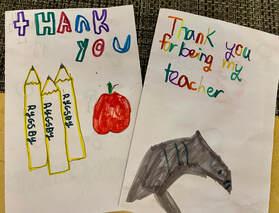
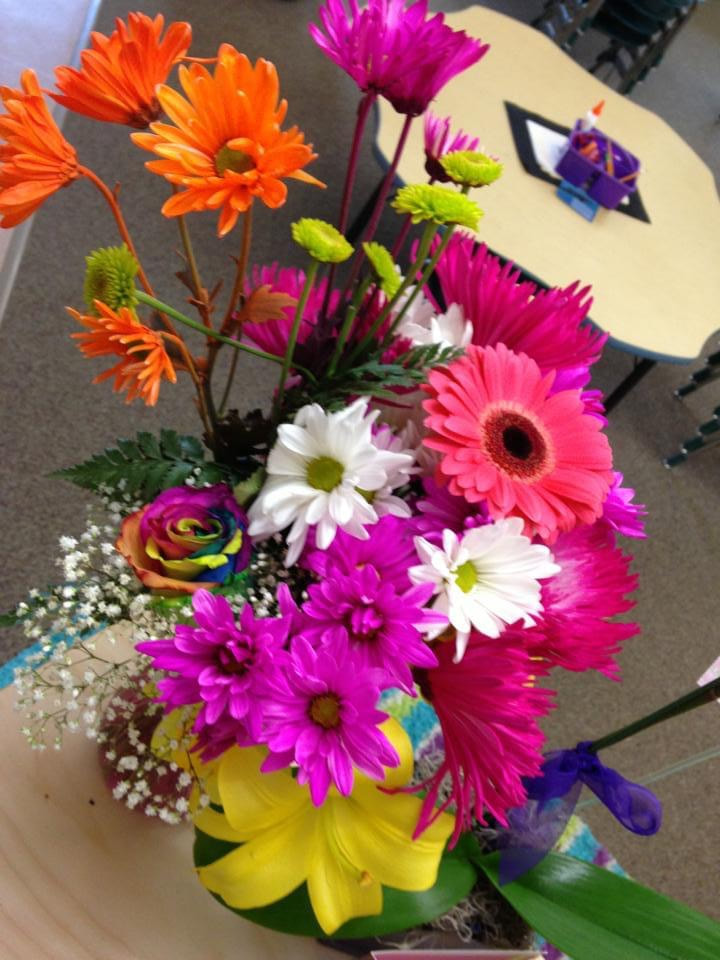
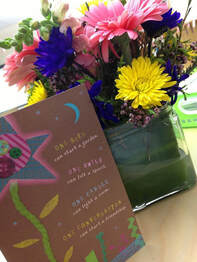
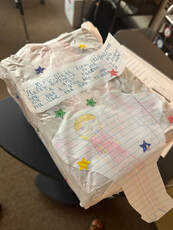

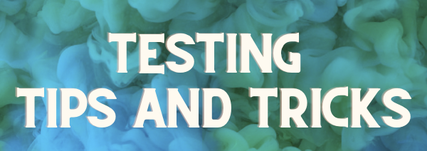

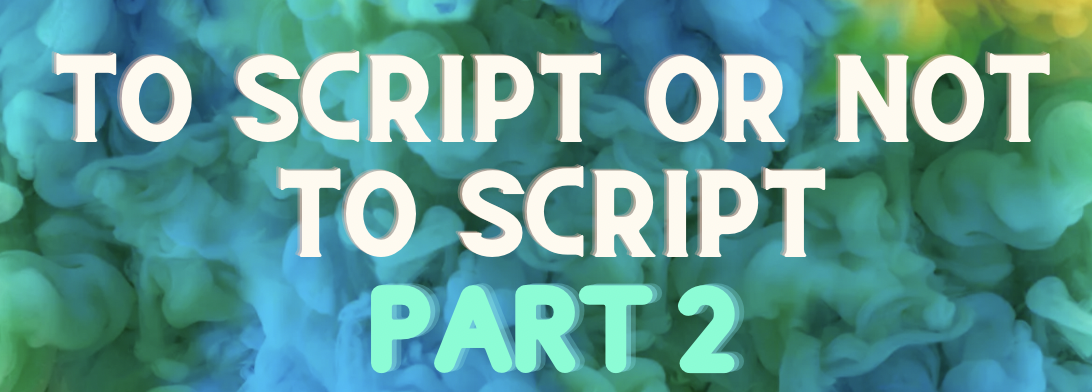
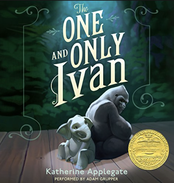
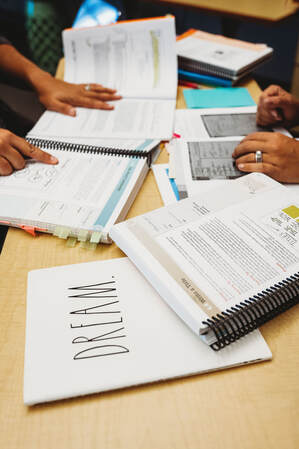

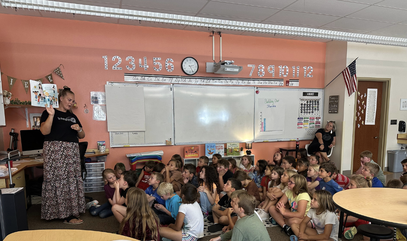
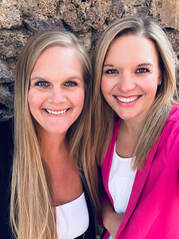


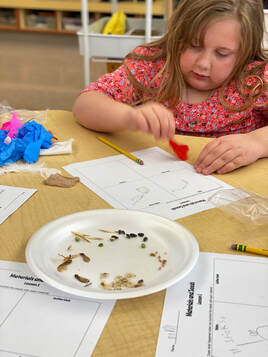
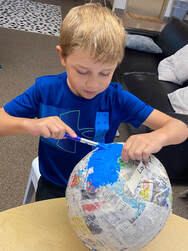
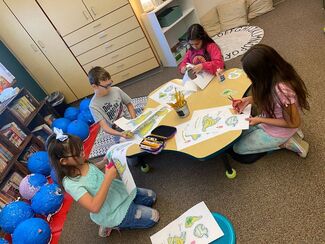
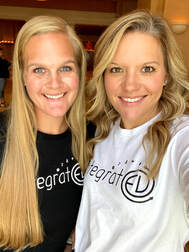

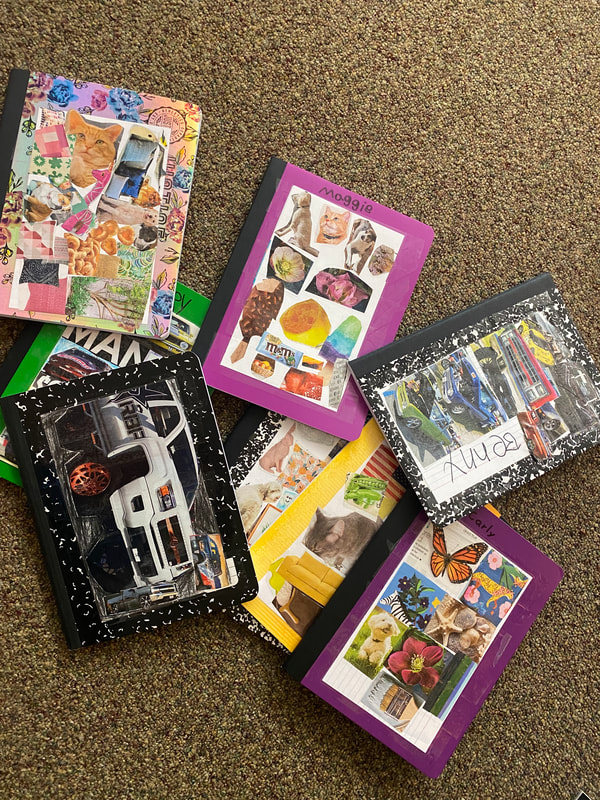
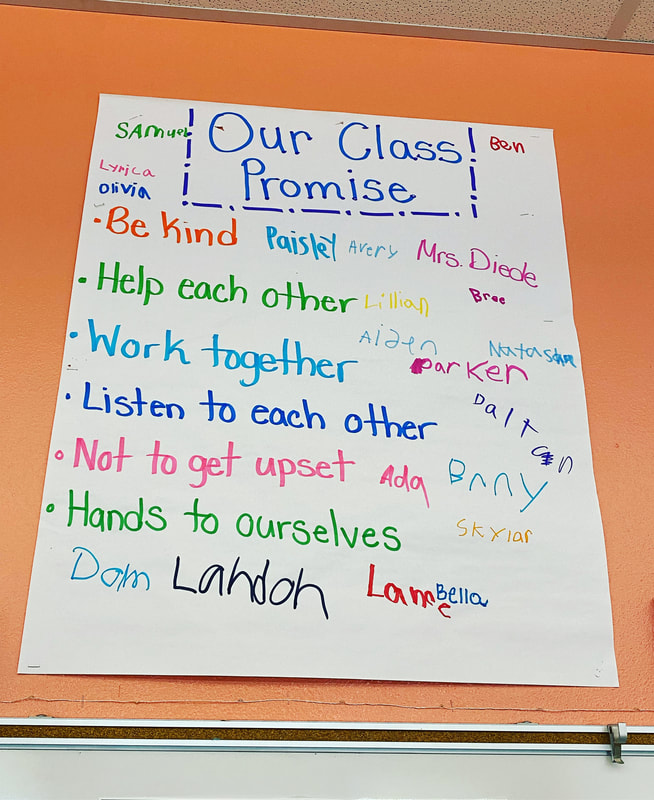
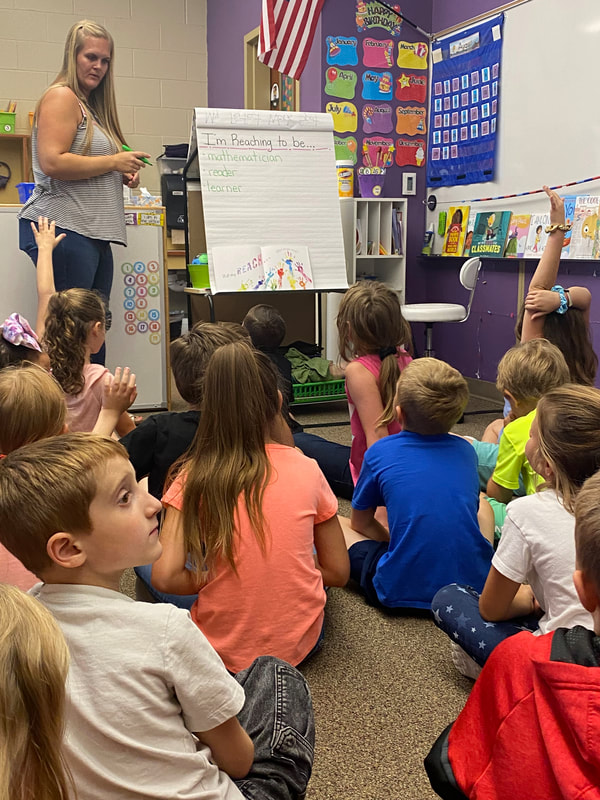
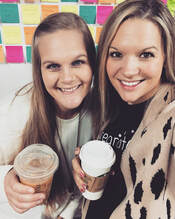

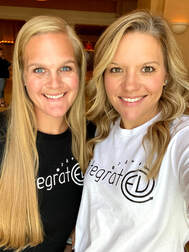
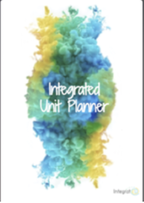
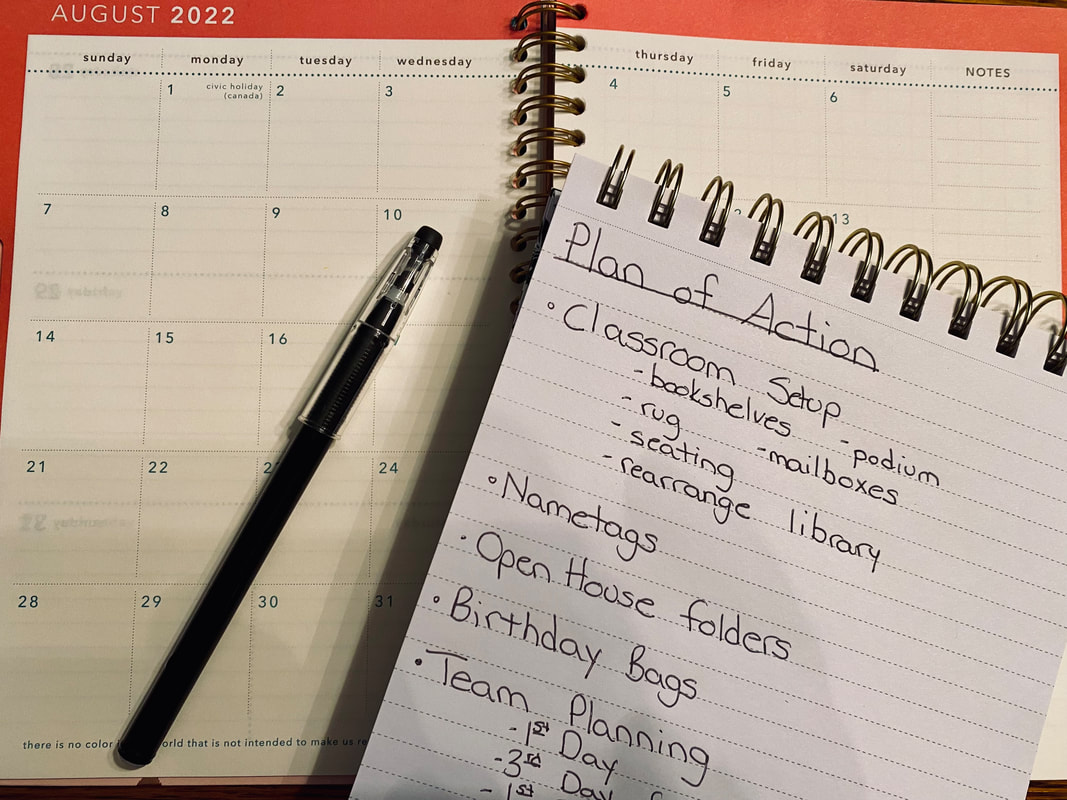
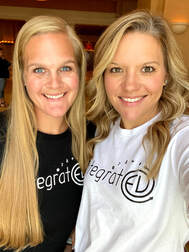
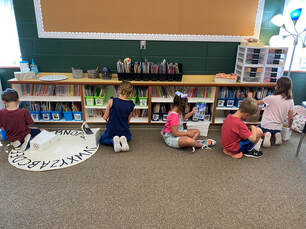
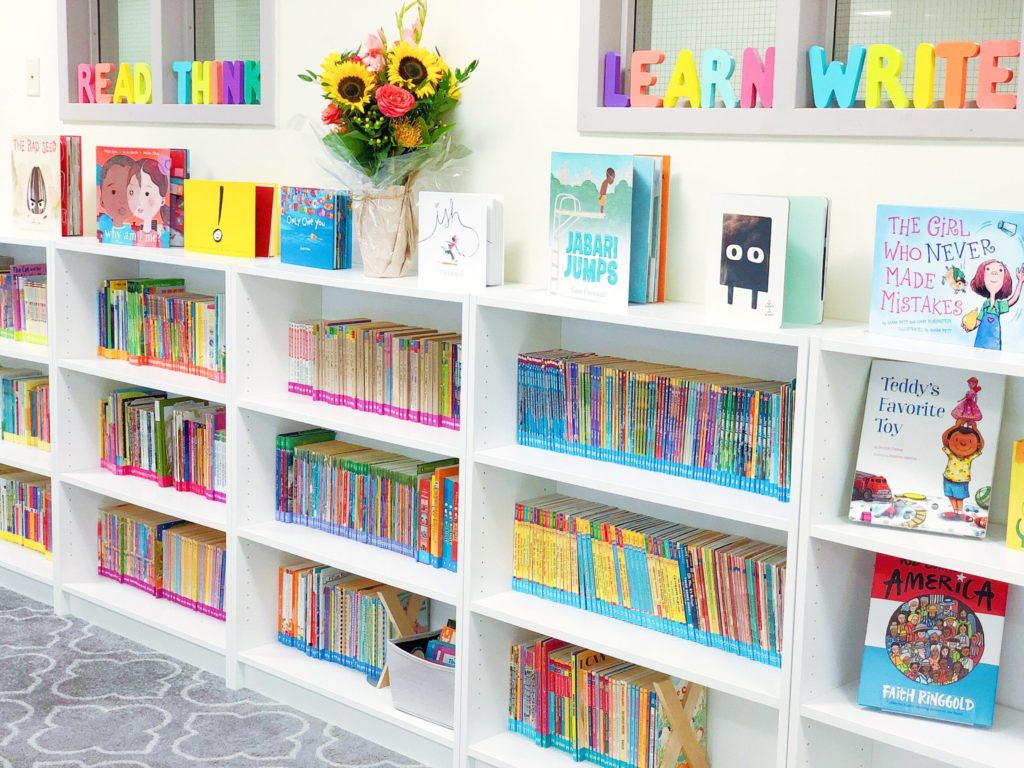
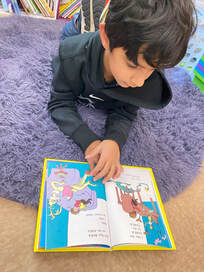

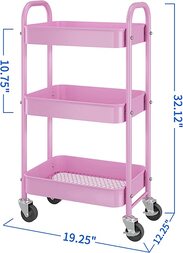
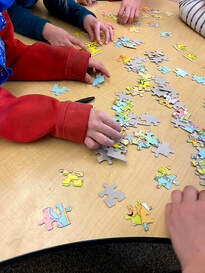
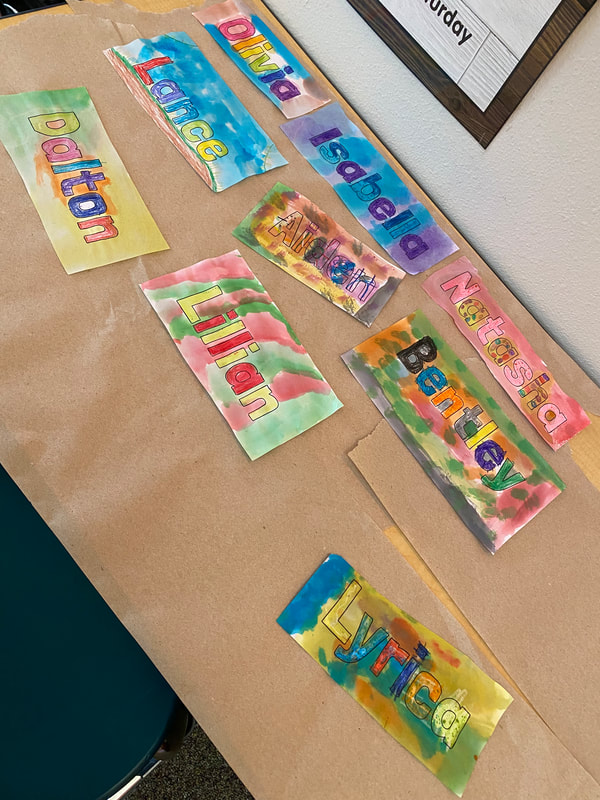
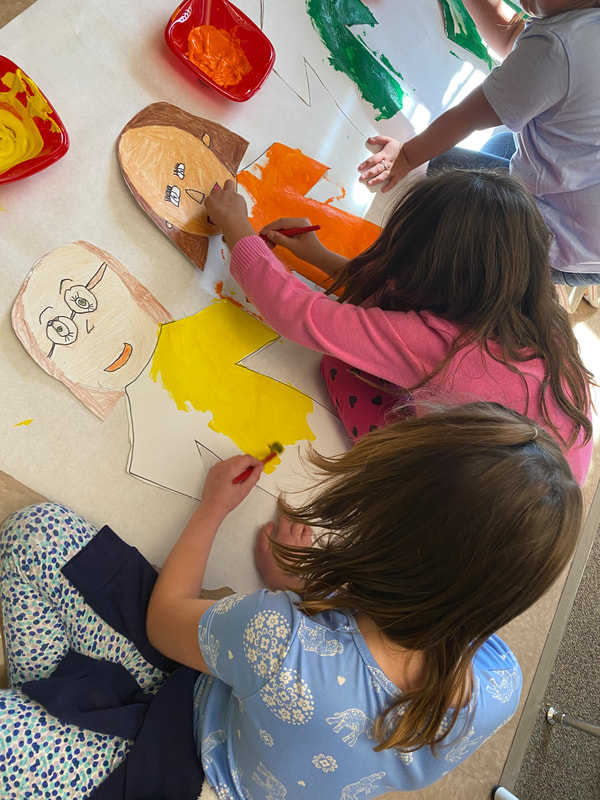
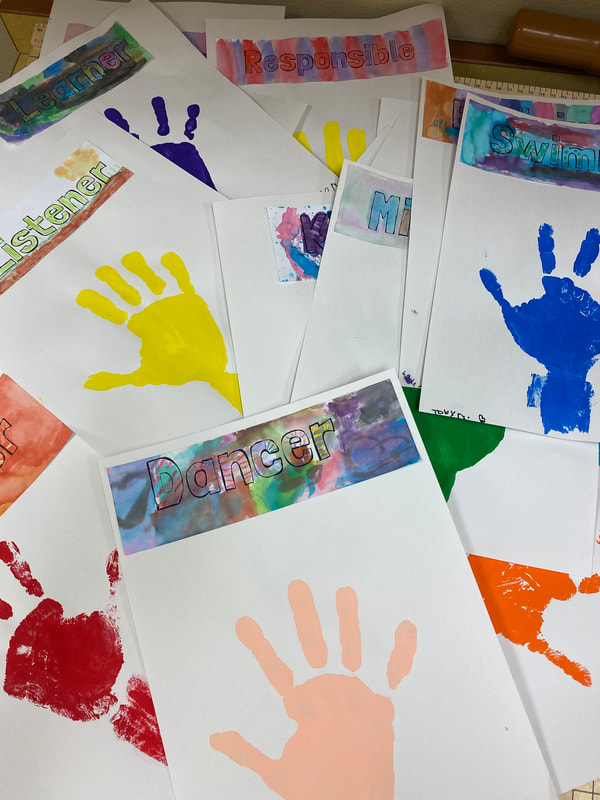
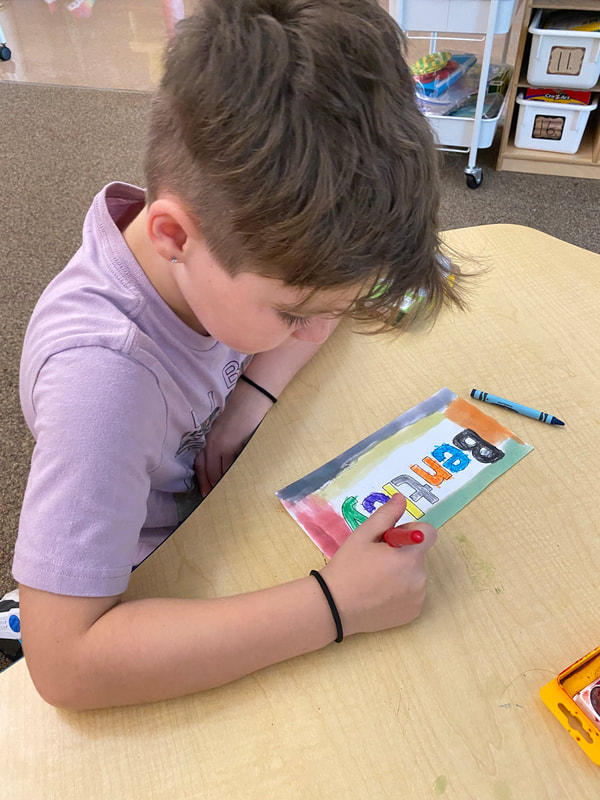
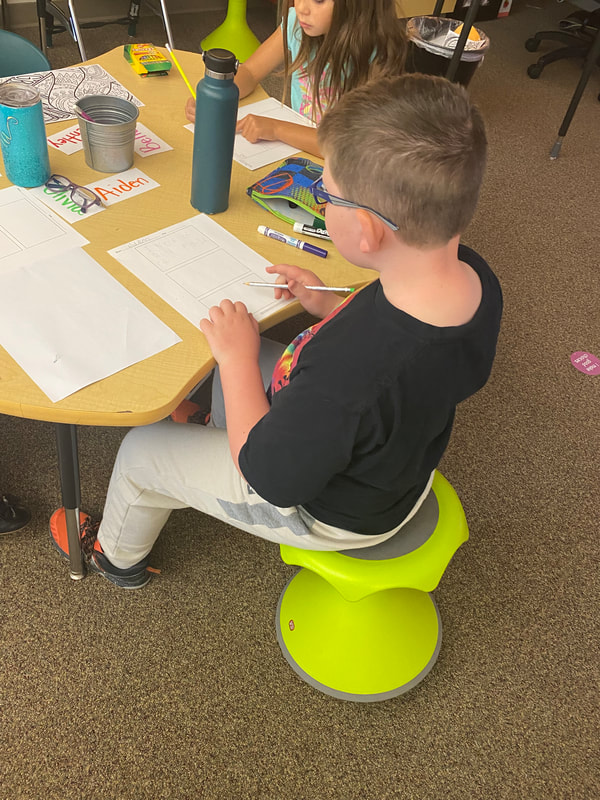
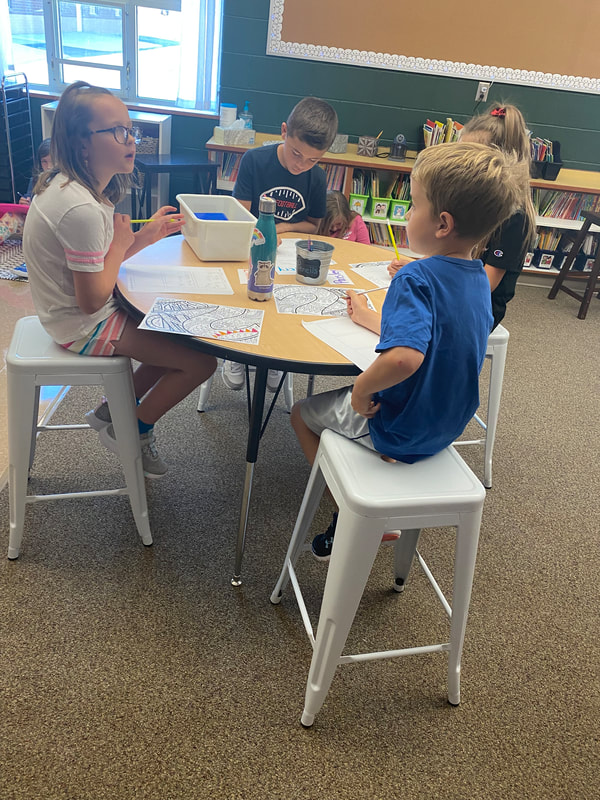
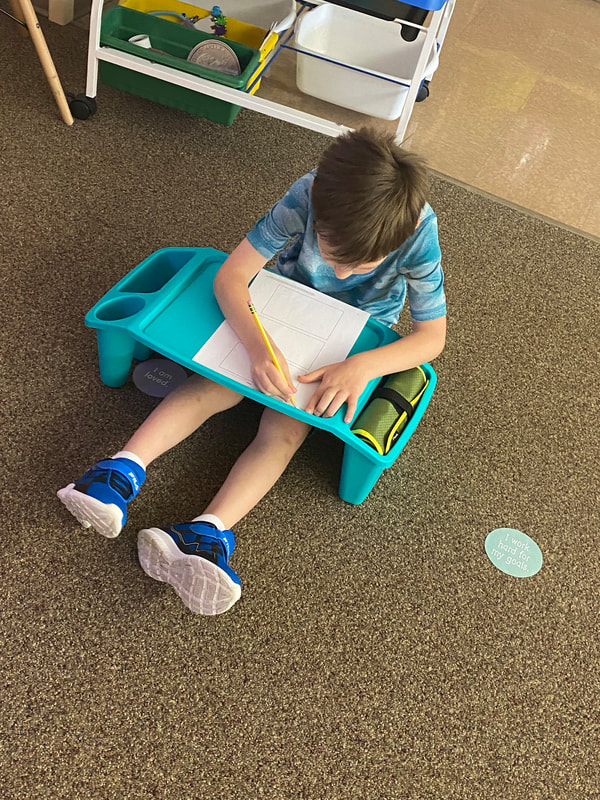
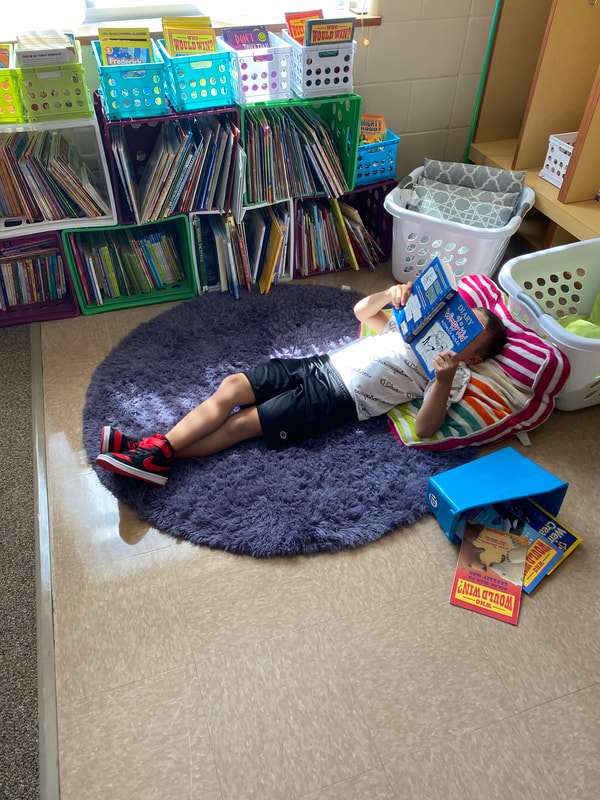
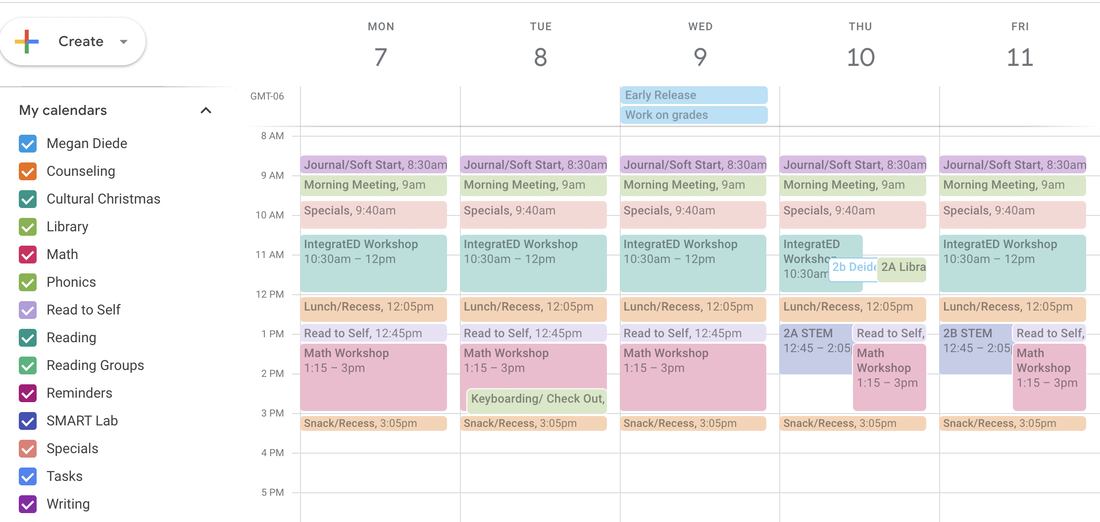
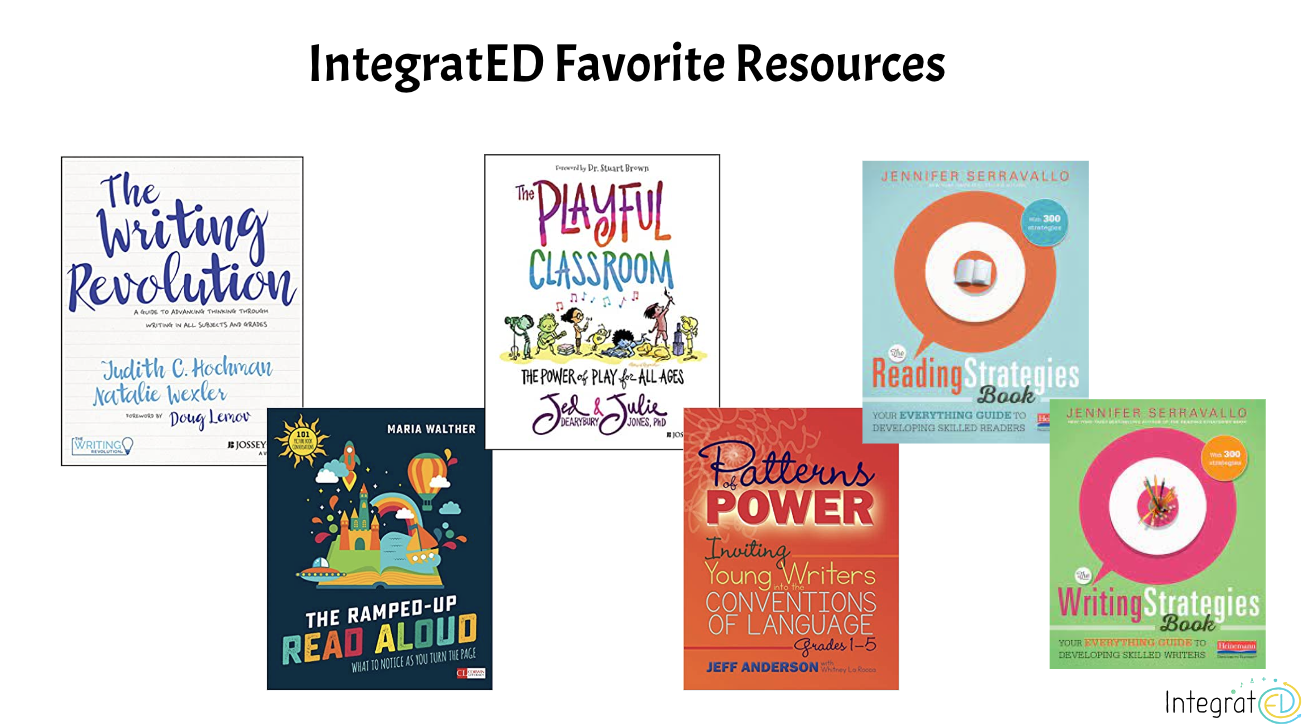
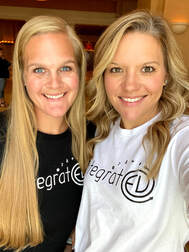
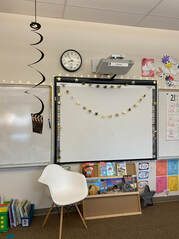
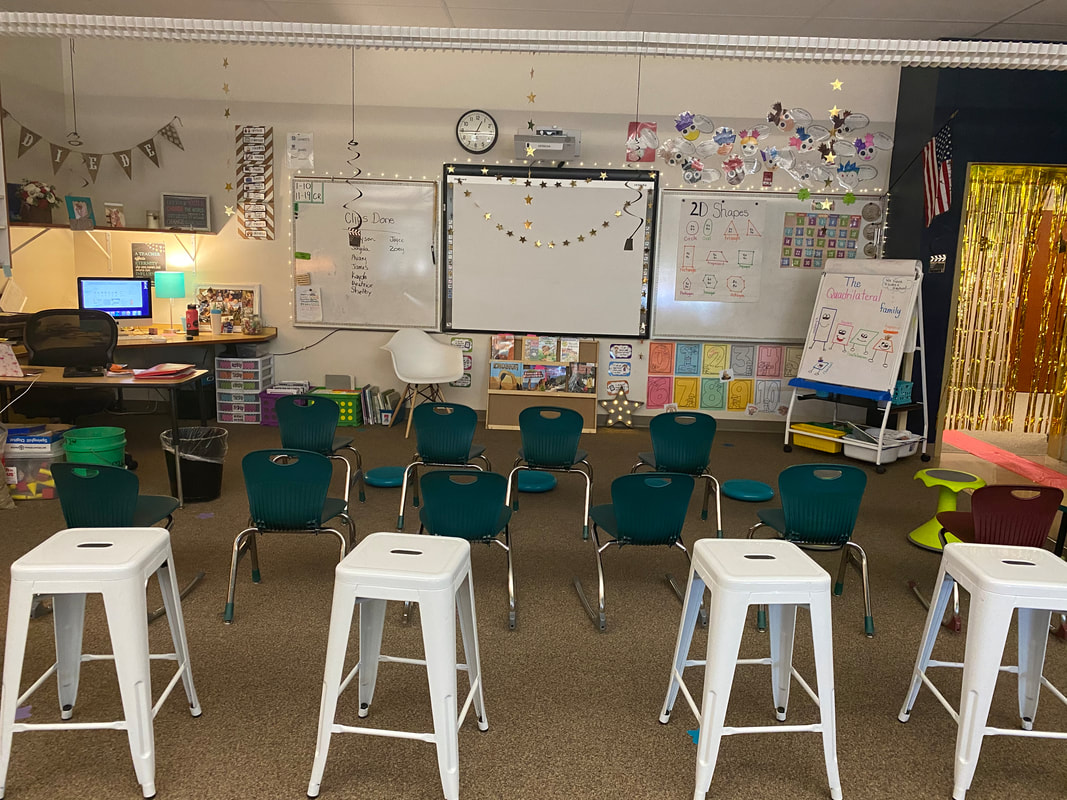
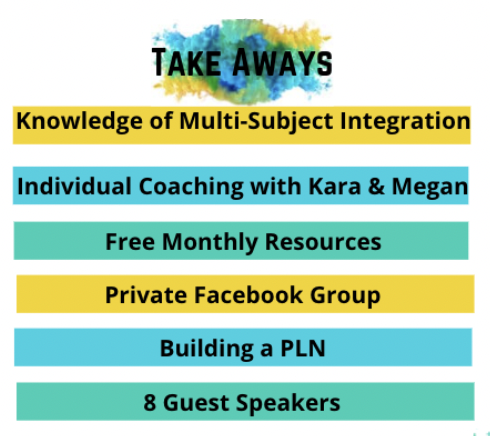
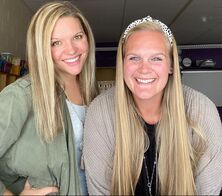
 RSS Feed
RSS Feed
